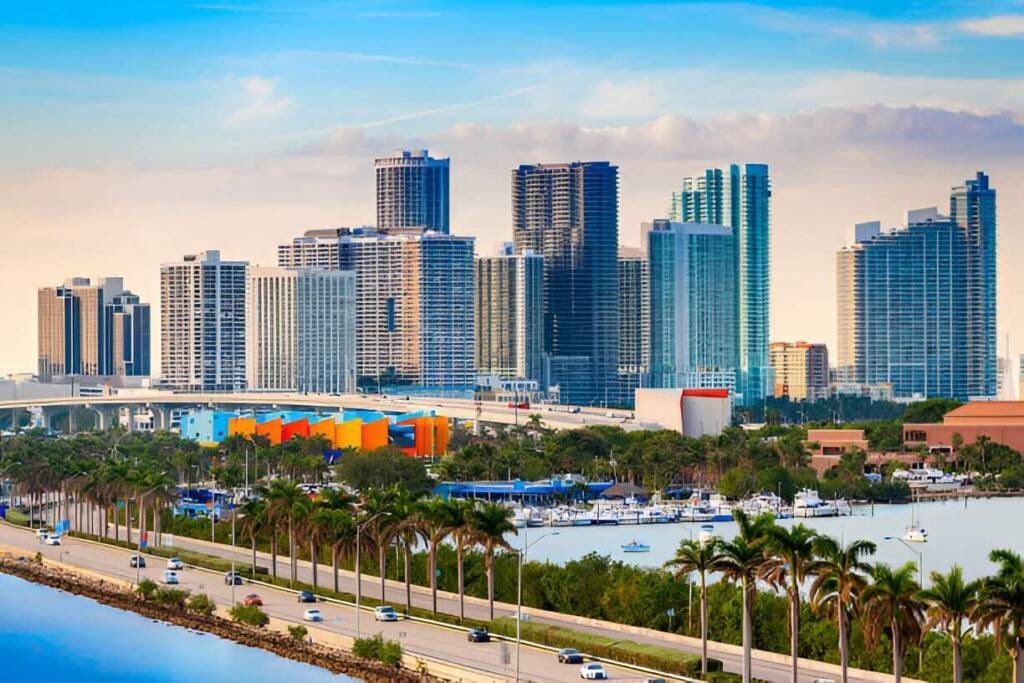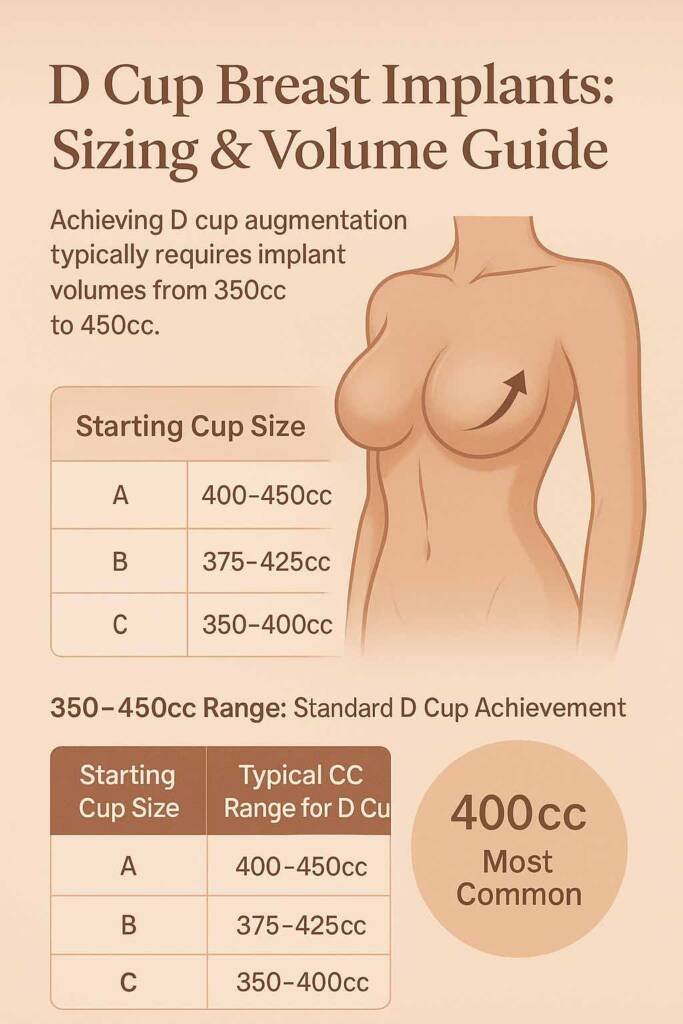For many patients, the appearance of their stomach can affect their confidence and lifestyle choices, from avoiding certain clothing to feeling self-conscious in swimwear. A mini tummy tuck can help restore confidence while providing natural-looking results.
This procedure focuses on addressing excess skin and fat in the lower abdomen, making it ideal for individuals with minimal to moderate concerns. Mini tummy tucks typically involve shorter incisions, reduced scarring, and quicker recovery times compared to full tummy tucks.
While a mini tummy tuck is an excellent option for many patients, alternative procedures may be more suitable depending on individual needs. These can include laser liposuction combined with skin tightening, ultrasound cavitation for fat reduction, or thermage for skin tightening. During your consultation, Dr. K will discuss whether a mini tummy tuck or an alternative procedure would better achieve your goals.
What is a Mini Tummy Tuck?
A mini tummy tuck is a less invasive alternative to a full abdominoplasty, designed to address stubborn fat deposits and excess skin in the lower belly region.
During the procedure, surgeons remove an ellipse of skin (approximately the size of two tennis balls) and underlying fat. The final scar is typically 5–6 inches long, similar to a C-section scar, and sits below the bikini line.
The surgical procedure targets the area between the navel and pubic bone, involving a shorter incision typically hidden just above the pubic area—a region that often becomes bulging and saggy due to pregnancy, weight loss, or aging, and can be resistant to exercise. This natural aging process is linked to collagen degradation, with research showing that collagen production decreases by approximately 1% each year after the age of 20, affecting skin elasticity and firmness.
Mini tummy tucks are ideal for individuals with minimal excess skin and fat concentrated below the navel, particularly those who have experienced pregnancy or weight loss. The surgery is performed under anesthesia in a surgical facility, with the surgeon removing excess skin and tightening abdominal muscles as needed.
Benefits of a mini tummy tuck include:
- Shorter recovery time
- Smaller scar
- Targeted improvement of lower abdomen
- Enhanced abdominal contour
Patients can expect a flatter, more toned lower abdomen after recovery, helping to restore confidence and improve body image. It’s important to note that a mini tummy tuck may not be suitable for everyone, and a consultation with a board-certified plastic surgeon like Dr. K can determine if this procedure is appropriate for an individual’s specific needs and goals.
If a standard tummy tuck is necessary, it can be effectively combined with other cosmetic surgeries such as breast procedures or liposuction for more comprehensive body contouring results. This combination approach can provide enhanced overall outcomes for suitable candidates for a standard tummy tuck or a mommy makeover.
Ideal Candidates for a Mini Tummy Tuck
Mini tummy tucks are best suited for individuals with specific physical characteristics and aesthetic goals. The best candidates are typically near their ideal weight and have localized concerns in the lower abdominal area.
Ideal candidates should be within 10–15 pounds of their target weight, with a normal BMI (below 30). The procedure can be particularly beneficial for those with C-section scars or enlarged navels from pregnancy, offering improvement in these areas while creating a more toned appearance.
Potential mini tummy tuck candidates should be in good overall health and maintain a stable weight for at least six months prior to the procedure. Weight stability is something you want to maintain not only before but also after surgery, as significant fluctuations can adversely affect the results.
Candidates should be at a stable weight with no immediate plans for pregnancy, as future weight fluctuations or pregnancy can reverse the procedure’s effects.
Non-smokers or those willing to quit smoking several weeks before and after surgery are preferred candidates. The mini tummy tuck procedure is particularly relevant for women who have had C-sections, as the surgical incisions through multiple skin layers can create varying appearances in the underlying tissue and skin that a mini tummy tuck can address.
Ideal candidates for a mini tummy tuck often have a small amount of excess skin and fat below the navel, a condition sometimes referred to as a “pregnancy pooch” or “apron belly.” These candidates typically have good skin elasticity and minimal muscle laxity, with concerns limited to below the belly button, making them prime candidates for this procedure.
Benefits of a Mini Tummy Tuck

Improved Contour
A mini tummy tuck effectively addresses concerns in the lower abdominal area by removing excess skin and fat below the navel, creating a smoother, flatter midsection. This technique is particularly beneficial for patients with a small amount of loose skin or a minor bulge in the lower abdomen, helping to eliminate the “pooch” that often remains after pregnancy or weight loss.
By tightening the muscles and removing excess tissue, a mini tummy tuck restores a more youthful and toned appearance to the lower belly. Results are often noticeable immediately after surgery and continue to improve as swelling subsides, with patients typically experiencing increased confidence in their appearance and finding that clothes fit better.
Less Invasive Procedure
Mini tummy tucks are less invasive than full abdominoplasties, with a shorter incision usually located just above the pubic area, resulting in a smaller scar that can often be hidden beneath underwear or swimwear. The procedure focuses on the area below the navel, leaving the upper abdomen untouched, which means less trauma to the body and reduced risks associated with more extensive surgeries.
Surgeons can often perform mini tummy tucks using lighter forms of anesthesia, such as local anesthesia with sedation, which can be beneficial for patients who prefer to avoid general anesthesia.
Shorter Recovery Time
Recovery from a mini tummy tuck is typically faster than that of a full tummy tuck, with many patients resuming light tasks within 1–2 weeks. Pain and discomfort are generally less intense and resolve more quickly, with most patients finding they need less pain medication during recovery.
Swelling and bruising are usually less severe, allowing patients to see results sooner. The body heals faster due to the smaller surgical area, leading to a quicker return to exercise and more strenuous activities.
Consultation Process in Miami
When seeking a mini tummy tuck in Miami, it’s essential to select a board-certified plastic surgeon with experience in this specific procedure. Research potential surgeons’ credentials, review before-and-after photos of their work, and read patient testimonials.
Many reputable clinics in Miami, like Dr. K Miami, offer free consultations, allowing patients to meet with multiple surgeons before making a decision. During this process, consider factors such as the surgeon’s communication style, their approach to patient care, and the clinic’s facilities.
What to Expect During Your Consultation
During the consultation, the surgeon will assess the patient’s overall health and examine their abdominal area, discussing the patient’s goals and explaining how a mini tummy tuck can address their concerns. The surgeon will outline the procedure steps, potential risks, and expected recovery time, while patients should prepare a list of questions about the surgery, anesthesia, and post-operative care.
The consultation typically includes a review of the patient’s medical history and any medications they’re taking. The surgeon may take photographs for before-and-after comparisons and to aid in surgical planning.
At Dr. K Miami, our focus is on providing exceptional results through Dr. K’s expertise and our personalized approach to patient care. Dr. K will provide a tailored treatment plan during your free consultation, discussing all associated costs and financing options to help make your transformation accessible.
Preoperative Care
Patients should schedule a preoperative appointment with their surgeon, during which the doctor will review the patient’s medical history and conduct a physical examination. They may order blood work, tests, and other necessary screenings.
Patients must disclose all medications, supplements, and herbal remedies they are taking, as the surgeon will provide instructions on which ones to stop or adjust before surgery. Smokers should quit at least four weeks prior to the procedure, as smoking can impair healing and increase the risk of complications.
For a mini tummy tuck, it’s essential to stop taking aspirin, anti-inflammatory medications, and certain supplements that could increase bleeding. Maintaining a healthy diet and getting adequate sleep in the weeks before surgery can significantly improve the chances of a smooth operation and recovery.
Arrange for transportation home after the surgery and secure help for the first few days of recovery.
Diet and Lifestyle Adjustments
Maintaining a stable weight is essential before a mini tummy tuck. Patients should aim to reach their target weight and maintain it for several months prior to surgery.
A healthy, balanced diet rich in protein, vitamins, and minerals promotes healing, so patients should increase their intake of fruits, vegetables, and lean proteins. Staying hydrated by drinking plenty of water in the weeks leading up to surgery is crucial. A low-sodium diet is recommended during recovery to minimize swelling.
Patients should reduce alcohol consumption and eliminate it completely at least two weeks before the procedure. Getting adequate sleep and managing stress levels can positively impact the body’s ability to heal post-surgery.
The Mini Tummy Tuck Procedure
A mini tummy tuck is a less invasive alternative to a full abdominoplasty, targeting the lower abdominal area and addressing loose skin and muscle laxity below the navel.
The procedure involves smaller incisions and a quicker recovery time compared to a full tummy tuck, typically taking one to two hours, depending on individual physiology and required modifications.
The SurGery
Mini tummy tuck techniques focus on the lower abdomen and are typically performed as an outpatient surgery. The surgeon begins by making a horizontal incision between the pubic area and belly button, with additional incisions near the navel if necessary.
Permanent stitches are used to ensure proper muscle tightening and optimal results, making this procedure ideal for patients with minimal upper abdominal concerns. Unlike a full abdominoplasty, the mini tummy tuck does not involve repositioning the navel.
During the procedure, advanced long-acting local anesthetics (e.g. Novocaine) are administered for enhanced pain management, providing relief for up to three days post-surgery.
During liposuction, if performed, the surgeon makes small incisions (approximately 1 cm) in the upper pubic area. Tumescent fluid is administered to help separate fat deposits from surrounding tissues.
Anesthesia
Anesthesia options for a mini tummy tuck include deep sedation, regional anesthesia, or general anesthesia. A board-certified anesthesiologist administers the chosen method to ensure patient comfort and safety throughout the procedure.
Many patients can undergo the procedure with local anesthesia and sedation, allowing them to remain relaxed and comfortable while experiencing no pain. This minimally invasive approach often enables patients to return home the same day.
Incisions
The surgeon makes a limited incision, typically along the lower abdomen, extending horizontally between the hip bones. This incision is shorter than that of a full tummy tuck.
Careful placement of the incision allows for discreet scarring, often hidden beneath swimwear or underwear. For patients with previous C-section scars, these can often be incorporated into the new incision, minimizing additional scarring.
Muscle Tightening and Skin Removal
During the mini tummy tuck, surgeons address muscle laxity in the lower abdominal wall, tightening the muscles to create a firmer, flatter appearance. Excess skin is carefully removed through the incision, with the amount of skin excised depending on the individual patient’s needs and goals.
Fat removal may be performed in conjunction with skin excision to enhance contouring. Surgeons use meticulous closure techniques to minimize scarring and promote optimal healing. The procedure results in a smoother, more toned lower abdominal area, with patients often experiencing improved self-confidence and a more proportionate body contour following recovery.
Postoperative Guidelines
Proper wound care is crucial for optimal healing. Patients should keep the incision site clean and dry, changing dressings as directed by their surgeon.
While full compression garments aren’t mandatory, wearing light compression garments like Spanx for a few weeks is recommended to reduce swelling and support the abdominal area.
Many patients experience minimal pain and can return to work the next day. However, it’s important to avoid activities that pull on the scar line, as this can lead to scar widening and affect the final cosmetic appearance. Patients may need to sleep with their upper body slightly elevated to minimize strain on the incision.
Follow-up appointments allow the surgeon to monitor progress and remove any drains or sutures. Dr. K and his surgical team utilize advanced pain control methods, including a specialized pain pump that delivers local anesthetic to the surgical area for up to three days post-operation, ensuring a comfortable recovery.
Managing Discomfort
Pain and discomfort are normal after a mini tummy tuck, and the surgeon will prescribe pain medication to help manage these symptoms in the initial days post-surgery. As discomfort subsides, patients can transition to over-the-counter pain relievers.
Some patients experience temporary numbness or altered sensation around the incision site, which typically improves over time as nerves regenerate.
Activity Restrictions
Rest is essential in the early stages of recovery, strenuous aerobic exercise and heavy lifting should be avoided for approximately six weeks post-surgery. The incision scar typically continues to mature over 6–12 months, and patients can begin scar reduction treatments, such as silicone gel applications, after the first month of recovery.
Dr. K Miami plastic surgery offers overnight recovery stays at their facility for enhanced monitoring and support during the initial recovery period.
Though gentle walking is encouraged early in recovery, more strenuous activities like running or cycling should wait until approximately 4–6 weeks post-surgery. Core-strengthening exercises may require additional waiting time and should only be resumed with your surgeon’s approval.
Patients should avoid strenuous activities, heavy lifting, and intense exercise for several weeks. Light walking is encouraged to promote circulation and prevent blood clots, with desk job workers typically returning to work within one week.
While initial recovery allows for resumption of normal activities within two to three weeks, patients should understand that it may take up to three months for the body to fully adapt to its new abdominal configuration.

Risks with surgery
Infection is a primary concern with any surgical procedure, and mini tummy tucks can lead to wound infections at the incision site. Bleeding and hematoma formation may occur, requiring additional treatment.
Seroma, a buildup of fluid under the skin, is another common risk, which surgeons often address by placing drains to help prevent this complication. Scarring is inevitable, but excessive or abnormal scarring can develop.
There’s a small risk of blood clots, particularly deep vein thrombosis, and while rare, anesthesia-related complications are also possible.
Some patients experience numbness or changes in sensation around the surgical area.
Minimizing Complications
Choosing a board-certified plastic surgeon with extensive experience in mini tummy tucks, like Dr. K, is crucial for reducing risks. Patients should thoroughly discuss their medical history and any medications with their doctor to ensure a safe and successful procedure.
Following pre-operative instructions carefully helps prepare the body for surgery. Quitting smoking several weeks before the procedure can improve healing and reduce complications.
Post-operative care is vital, and patients must follow their surgeon’s instructions regarding rest, activity limitations, and wound care. Wearing compression garments as directed aids in proper healing.
Attending all follow-up appointments allows the surgeon to monitor recovery and address any concerns promptly. Maintaining a healthy lifestyle, including proper nutrition and hydration, supports optimal healing.
By understanding the potential risks and taking proactive steps to minimize complications, patients can work with their surgeon to achieve the best possible outcomes from their mini tummy tuck procedure.
Immediate and Long-term Results
Patients typically notice a flatter lower abdomen immediately after surgery, though swelling may initially obscure the full results. As swelling subsides over 4–6 weeks, the new abdominal contour becomes more apparent, with final results emerging around 3–6 months post-surgery when all swelling resolves.
While initial improvements in abdominal contour are visible shortly after surgery, swelling will temporarily obscure some results. On the other hand, for a standard tummy tuck, complete scar healing and maturation can take up to one to two years, with scars gradually flattening and fading during this time.
Long-term outcomes depend on maintaining a stable weight through diet and exercise. Most patients achieve their fully-recovered, tight lower abdomen appearance within several weeks.
For those who maintain a stable weight, these results can be life-long and address aesthetic concerns that couldn’t be resolved through diet and exercise alone. Many patients enjoy their improved abdominal profile for years with proper care.
Setting Realistic Expectations
A mini tummy tuck targets excess skin and fat below the navel and does not address issues above the navel or on the sides. The procedure is often combined with liposuction as part of a comprehensive Mommy Makeover package.
Patients should expect:
- Flatter lower abdomen
- Improved lower abdominal muscle tone
- Reduction in excess skin below the navel
- A low horizontal scar above the pubic area
Additionally, while the procedure improves contour, it is not a substitute for a healthy lifestyle and should not be considered a weight loss solution.
It’s important to note that this procedure has specific limitations. The skin tightening effects are concentrated in the area directly above the pubic region, and the procedure cannot address muscle separation or loss above the navel.
Consulting with Dr. K, a board-certified plastic surgeon, helps patients understand potential outcomes and limitations. Clear communication ensures alignment between patient goals and surgical possibilities.
How Much Does a Mini Tummy Tuck Cost in Miami?
Mini tummy tuck procedures in Miami typically range from $3,800 to $10,000, which often includes the surgeon’s fee, anesthesia, facility costs, and follow-up visits. However, exact costs can vary based on individual patient needs and the specific techniques used.
Many clinics in Miami offer financing options to make the procedure more accessible, such as payment plans with 0% interest, credit options through companies like CareCredit, PatientFi, and Alphaeon Credit, and out-of-pocket payment options. Patients are encouraged to discuss financing details during their consultation, as some facilities provide customized payment plans tailored to each patient’s financial situation.
While cost is a factor, choosing a qualified and experienced surgeon should be the primary consideration. Patients should thoroughly research their options and select a board-certified plastic surgeon with a proven track record in mini tummy tuck procedures.
At Dr. K Miami, we understand that investing in yourself is an important decision. During your free consultation, Dr. K will provide a personalized treatment plan and discuss all associated costs.
Our boutique clinic offers several financing options to help make your transformation accessible:
- Payment plans with 0% interest
- Credit options through companies like CareCredit, PatientFi, and Alphaeon Credit
- Flexible out-of-pocket payment options
- Customized payment plans tailored to each patient’s financial situation
Our team will work with you to find the most suitable financial arrangement for your needs. While cost is a consideration, our focus remains on providing exceptional results through Dr. K’s expertise and our personalized approach to patient care.
It’s important to note that insurance typically does not cover mini tummy tucks, as they are considered elective cosmetic procedures. Patients should budget for additional expenses such as pre-operative tests, post-operative garments, and any necessary medications.
Why Choose Miami for Your Mini Tummy Tuck
Miami has become a top destination for mini tummy tuck procedures, boasting a high concentration of experienced plastic surgeons specializing in this technique. Many clinics in Miami offer competitive pricing for mini tummy tucks, with some starting as low as $3,500, making the procedure accessible to a wider range of patients.
The warm climate in Miami is ideal for recovery, allowing patients to enjoy the sunshine and beach atmosphere while healing, which can contribute to a positive mindset during the recovery process. Miami’s medical facilities are equipped with state-of-the-art technology for performing mini tummy tucks, ensuring patients receive high-quality care throughout their surgical journey.
The city’s reputation as a beauty and wellness hub attracts top talent in the field of cosmetic surgery, enabling patients to benefit from the expertise of renowned surgeons who regularly perform mini tummy tucks. Miami’s tourism infrastructure supports out-of-town patients, with luxurious accommodations and easy transportation options making the city an attractive choice for those traveling for their procedure.
Dr. K Miami stands out as a premier choice for your mini tummy tuck procedure for several compelling reasons:
- World-class credentials: Dr. K brings his Harvard Medical School education and Johns Hopkins surgical training to every procedure
- Artistic expertise: Known for his artistic touch and ability to achieve natural-looking results
- Personal attention: As a boutique clinic, we ensure each patient receives dedicated care directly from Dr. K
- Comprehensive care: Dr. K personally oversees your entire journey from consultation through recovery
- Advanced facilities: Access to state-of-the-art technology at multiple prestigious hospitals including Memorial Regional Hospital and Baptist Health South Miami Hospital
- Award-winning surgeon: Recognition includes the Clifford C. Snyder Award and Frank L. Coulson, Jr. Award for clinical excellence
- Customized approach: Your treatment plan is tailored to your specific needs and aesthetic goals
The boutique nature of our practice means you’ll never feel like just another patient. Dr. K’s friendly demeanor and surgical expertise combine to provide an exceptional experience throughout your transformation journey.
Take the Next Step Towards Your Transformation
Ready to explore your mini tummy tuck options with Harvard-trained plastic surgeon Dr. K? Contact us today for your free consultation:
- Phone: (305) 370-5002
- Email: info@drkmiamiplasticsurgery.com
Dr. K personally guides each patient through their transformation journey, from the initial consultation to post-operative care. As Miami’s boutique plastic surgery clinic, we ensure you receive the personalized attention and exceptional results you deserve.
Frequently Asked Questions
What is the recovery time for a mini tummy tuck in Miami?
Recovery time for a mini tummy tuck in Miami typically ranges from 1 to 2 weeks. Patients can usually return to light activities within a week, but should avoid strenuous exercise for 4–6 weeks.
Full recovery may take up to 3 months. Following the surgeon’s post-operative instructions closely helps ensure a smooth healing process.
Can a mini tummy tuck address stretch marks?
A mini tummy tuck can remove some stretch marks below the navel. However, it does not address stretch marks above this area.
The procedure primarily targets excess skin and fat in the lower abdomen. Patients with extensive stretch marks may need to consider alternative treatments.
What is the difference between a full tummy tuck and a mini tummy tuck?
A mini tummy tuck focuses on the area below the navel, while a full tummy tuck addresses the entire abdominal area. Mini tummy tucks involve smaller incisions and typically have shorter recovery times.
Full tummy tucks often include muscle repair and may reposition the navel. Mini tummy tucks are less invasive and best for patients with concerns limited to the lower abdomen.
Are the results of a mini tummy tuck permanent?
Results from a mini tummy tuck can be long-lasting if patients maintain a stable weight and healthy lifestyle. The removed fat cells and excess skin will not return.
However, significant weight fluctuations or pregnancy after the procedure can affect the results. Regular exercise and a balanced diet help preserve the surgical outcomes.
What kind of anesthesia is used during a mini tummy tuck operation?
Mini tummy tuck procedures in Miami are typically performed under general anesthesia to ensure the patient remains comfortable and unconscious throughout the surgery. In some cases, surgeons may use local anesthesia with sedation for mini tummy tucks.
The choice of anesthesia depends on the patient’s health, preferences, and the surgeon’s recommendation.
source https://drkmiamiplasticsurgery.com/mini-tummy-tuck-miami






